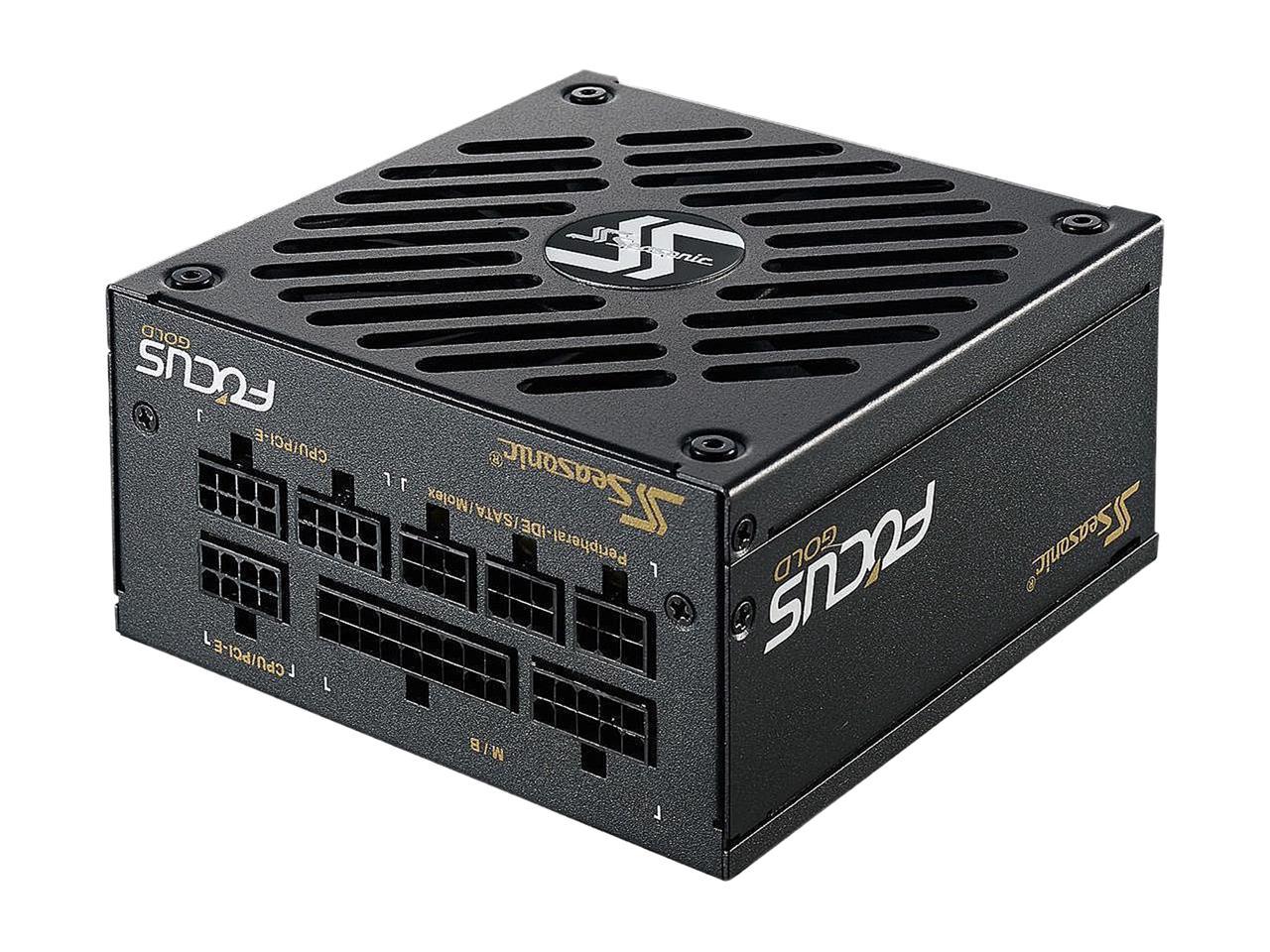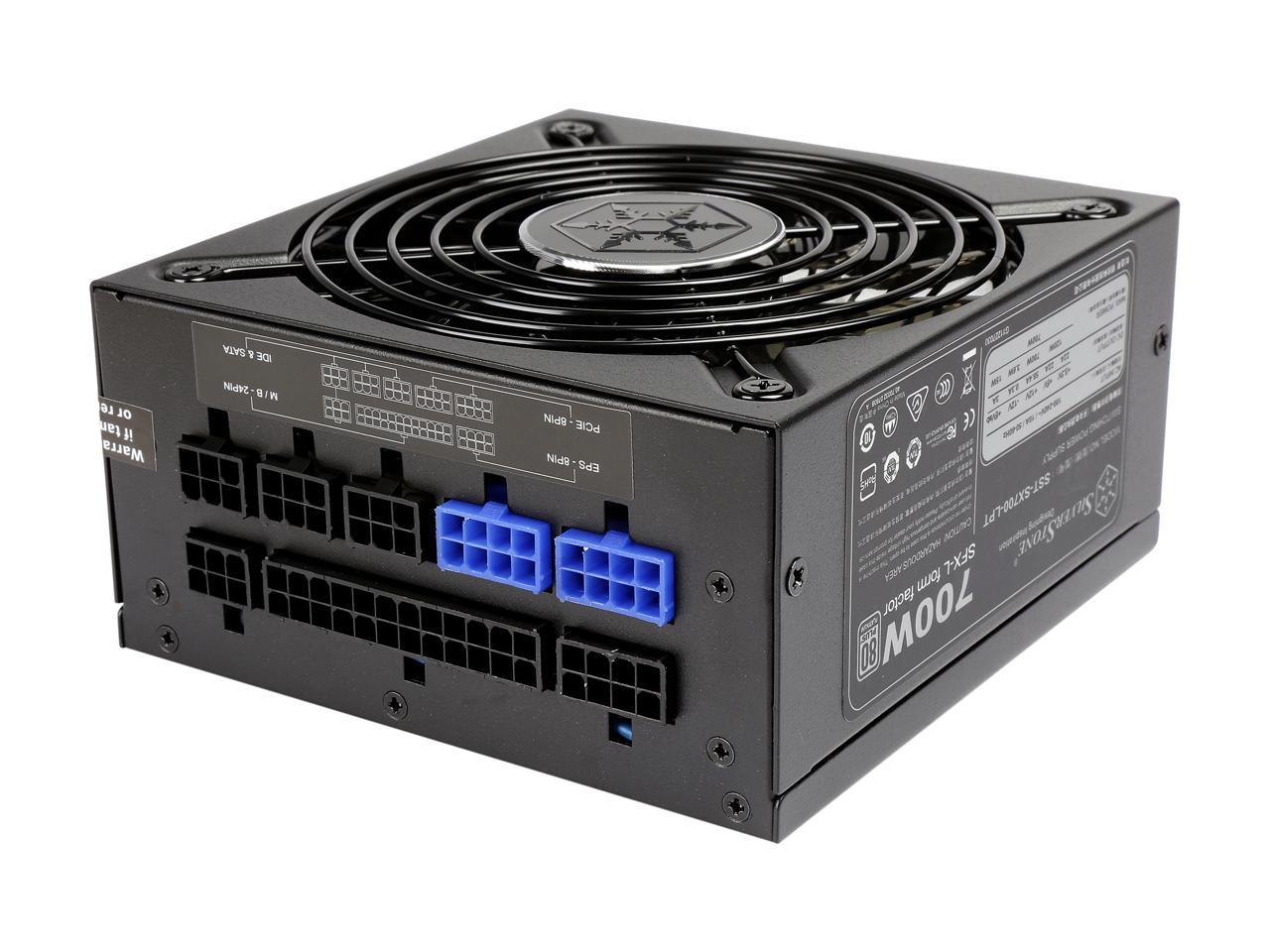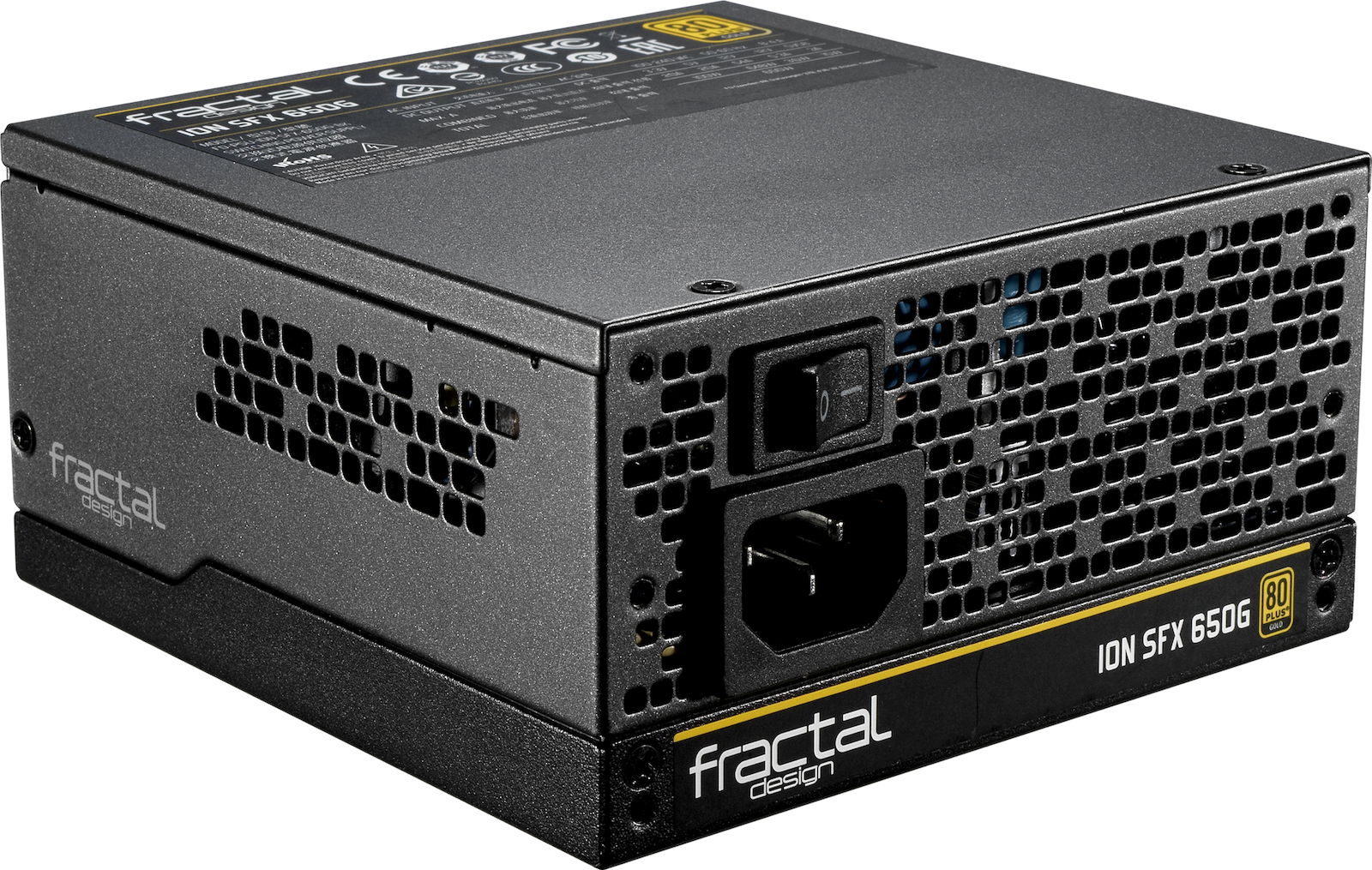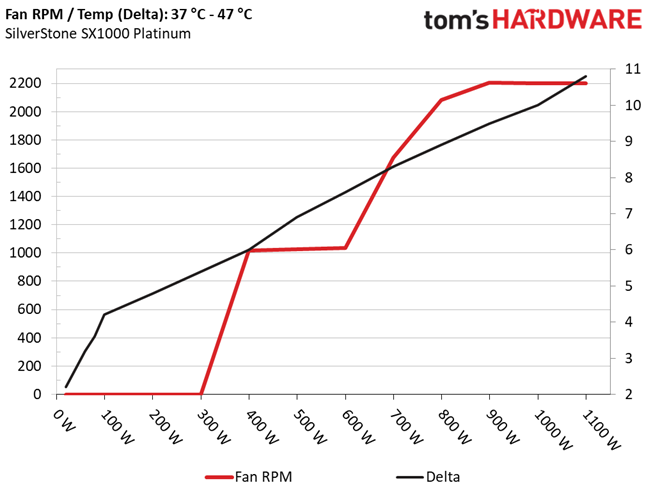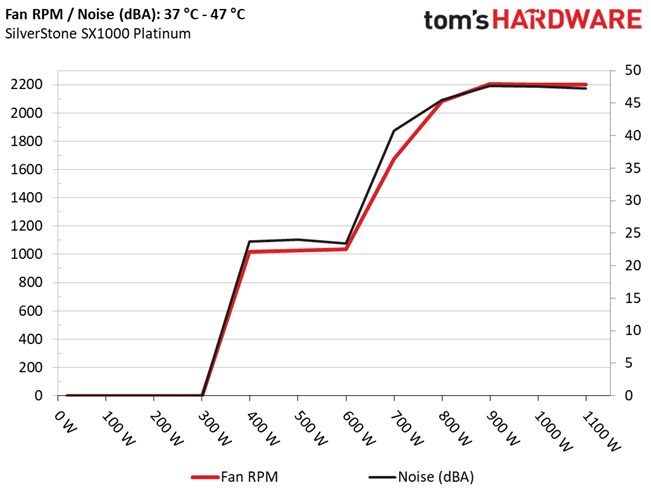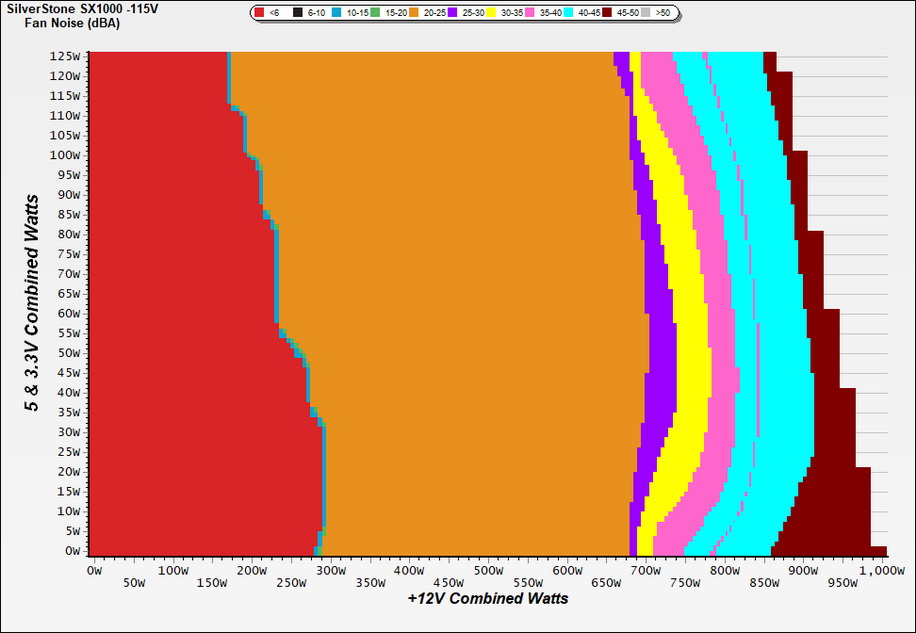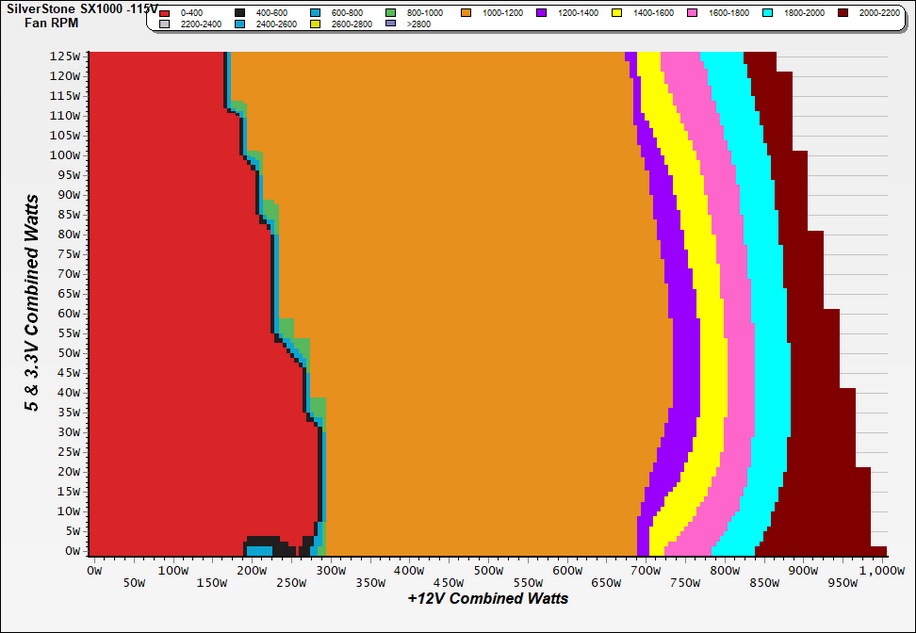Why you can trust Tom's Hardware
To learn more about our PSU tests and methodology, please check out How We Test Power Supply Units.
Primary Rails And 5VSB Load Regulation
The following charts show the main rails' voltage values recorded between a range of 40W up to the PSU's maximum specified load, along with the deviation (in percent). Tight regulation is an important consideration every time we review a power supply because it facilitates constant voltage levels despite varying loads. Tight load regulation also, among other factors, improves the system’s stability, especially under overclocked conditions and, at the same time, it applies less stress to the DC-DC converters that many system components utilize.
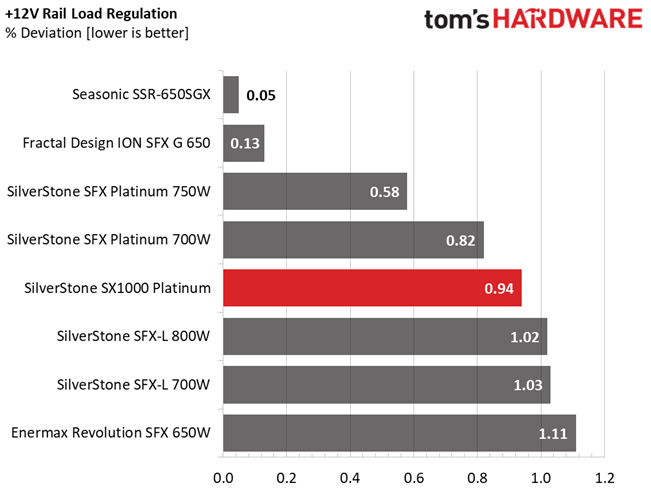
Results 1-8: Load Regulation
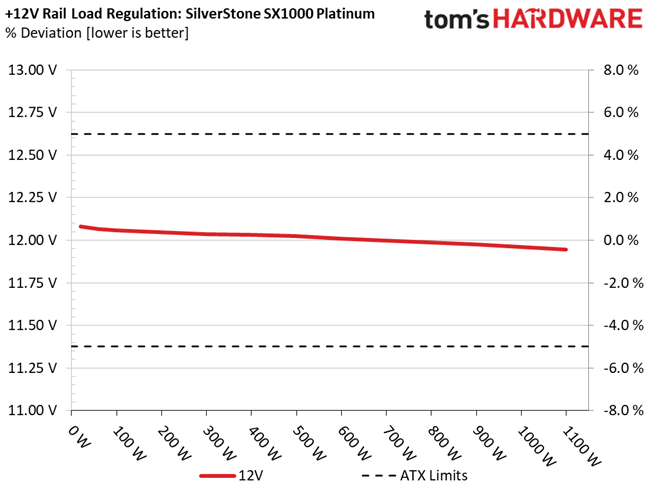
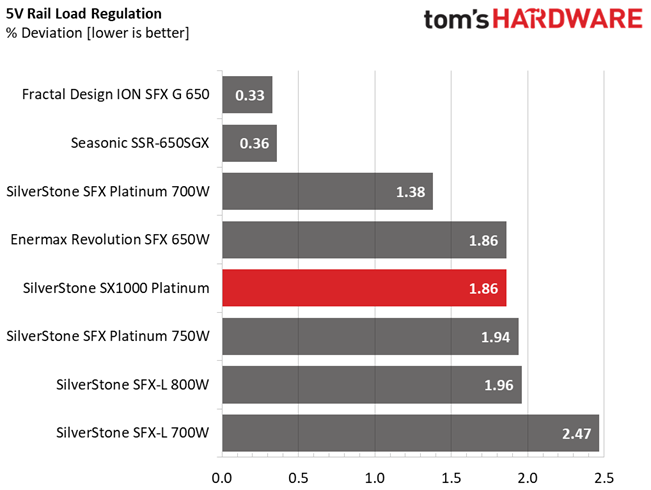
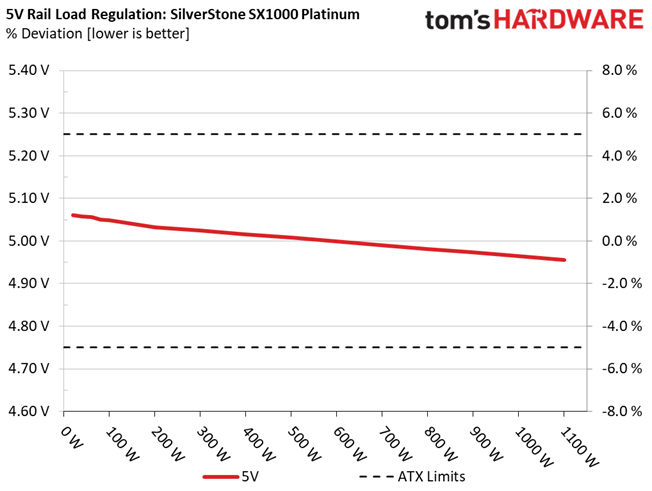
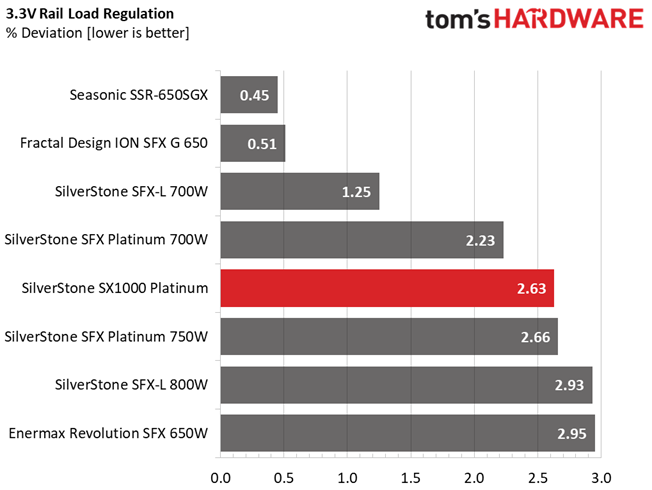

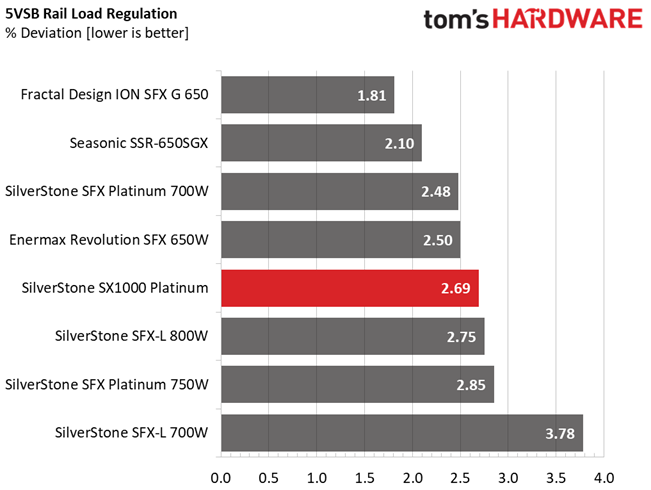
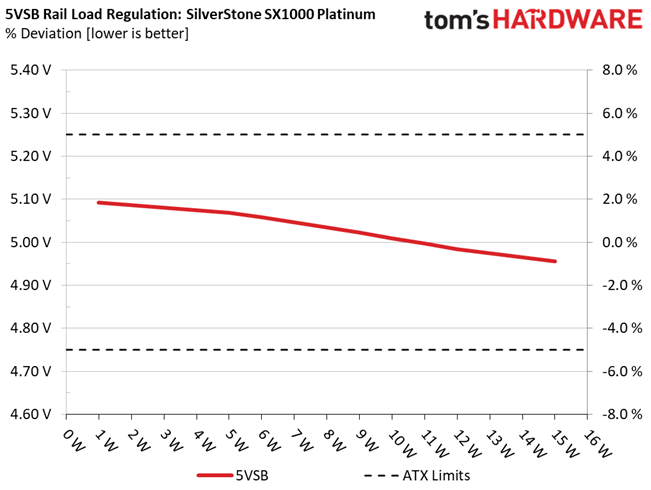
Load regulation is within 1% at 12V but not so tight on the minor rails, especially at 3.3V.
Hold-Up Time
Put simply; hold-up time is the amount of time that the system can continue to run without shutting down or rebooting during a power interruption.

Results 9-12: Hold-Up Time

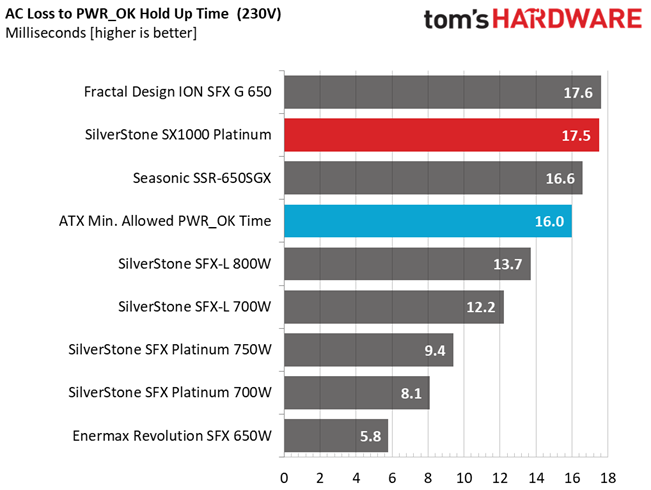

The bulk caps are large enough to provide a higher than 17ms hold-up time, and the power ok signal is accurate.
Inrush Current
Inrush current, or switch-on surge, refers to the maximum, instantaneous input current drawn by an electrical device when it is first turned on. A large enough inrush current can cause circuit breakers and fuses to trip. It can also damage switches, relays, and bridge rectifiers. As a result, the lower the inrush current of a PSU right as it is turned on, the better.

Results 13-14: Inrush Current

The inrush currents stay low, with both voltage inputs.
Get Tom's Hardware's best news and in-depth reviews, straight to your inbox.
Leakage Current
In layman's terms, leakage current is the unwanted transfer of energy from one circuit to another. In power supplies, it is the current flowing from the primary side to the ground or the chassis, which in the majority of cases is connected to the ground. For measuring leakage current, we use a GW Instek GPT-9904 electrical safety tester instrument.
The leakage current test is conducted at 110% of the DUT's rated voltage input (so for a 230-240V device, we should conduct the test with 253-264V input). The maximum acceptable limit of a leakage current is 3.5 mA and it is defined by the IEC-60950-1 regulation, ensuring that the current is low and will not harm any person coming in contact with the power supply's chassis.
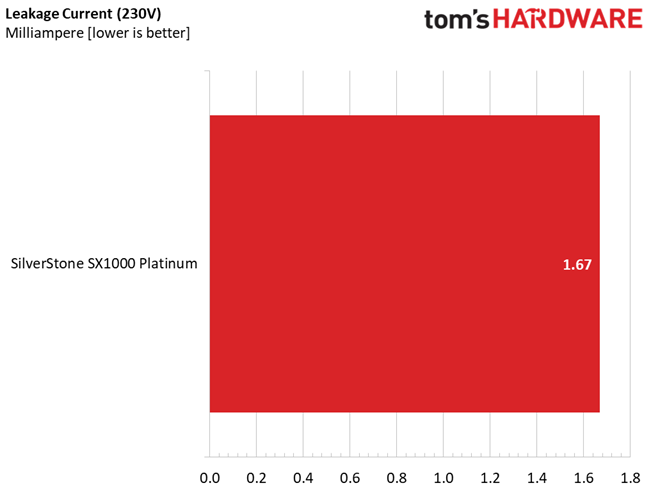
Leakage current is low. Unfortunately, we don't have leakage current readings from other SFX-L PSUs to make a comparison chart.
10-110% Load Tests
These tests reveal the PSU's load regulation and efficiency levels under high ambient temperatures. They also show how the fan speed profile behaves under increased operating temperatures.
| Test # | 12V | 5V | 3.3V | 5VSB | DC/AC (Watts) | Efficiency | Fan Speed (RPM) | PSU Noise (dB[A]) | Temps (In/Out) | PF/AC Volts |
| 1 | 6.500A | 1.980A | 1.976A | 0.986A | 99.970 | 83.572% | 0 | <6.0 | 44.59°C | 0.982 |
| 12.058V | 5.048V | 3.340V | 5.069V | 119.621 | 40.39°C | 115.13V | ||||
| 2 | 14.035A | 2.981A | 2.974A | 1.186A | 199.987 | 90.951% | 0 | <6.0 | 45.40°C | 0.969 |
| 12.048V | 5.032V | 3.327V | 5.058V | 219.884 | 40.61°C | 115.13V | ||||
| 3 | 21.926A | 3.484A | 3.477A | 1.387A | 299.945 | 91.798% | 0 | <6.0 | 46.78°C | 0.985 |
| 12.036V | 5.024V | 3.319V | 5.046V | 326.744 | 41.35°C | 115.13V | ||||
| 4 | 29.765A | 3.989A | 3.987A | 1.589A | 399.346 | 91.952% | 1018 | 23.7 | 41.49°C | 0.993 |
| 12.032V | 5.016V | 3.312V | 5.034V | 434.297 | 47.51°C | 115.12V | ||||
| 5 | 37.336A | 4.993A | 4.998A | 1.792A | 499.479 | 91.913% | 1025 | 24.0 | 42.26°C | 0.997 |
| 12.025V | 5.008V | 3.303V | 5.022V | 543.426 | 49.14°C | 115.11V | ||||
| 6 | 44.942A | 6.003A | 6.011A | 1.996A | 599.606 | 91.554% | 1034 | 23.4 | 43.15°C | 0.998 |
| 12.011V | 4.999V | 3.294V | 5.009V | 654.922 | 50.77°C | 115.10V | ||||
| 7 | 52.525A | 7.015A | 7.029A | 2.200A | 699.343 | 90.932% | 1673 | 40.7 | 43.24°C | 0.999 |
| 11.999V | 4.990V | 3.286V | 4.997V | 769.081 | 51.55°C | 115.09V | ||||
| 8 | 60.188A | 8.003A | 8.053A | 2.407A | 799.723 | 90.289% | 2082 | 45.5 | 43.79°C | 0.999 |
| 11.987V | 4.981V | 3.277V | 4.984V | 885.741 | 52.64°C | 115.07V | ||||
| 9 | 68.193A | 8.544A | 8.562A | 2.410A | 899.150 | 89.653% | 2204 | 47.6 | 44.68°C | 0.999 |
| 11.976V | 4.973V | 3.269V | 4.976V | 1002.918 | 54.15°C | 115.07V | ||||
| 10 | 76.073A | 9.064A | 9.107A | 3.026A | 999.586 | 88.978% | 2202 | 47.5 | 45.57°C | 0.999 |
| 11.961V | 4.964V | 3.260V | 4.955V | 1123.409 | 55.57°C | 115.06V | ||||
| 11 | 84.553A | 9.080A | 9.128A | 3.031A | 1099.577 | 88.291% | 2201 | 47.2 | 46.54°C | 0.999 |
| 11.944V | 4.956V | 3.252V | 4.946V | 1245.404 | 57.29°C | 115.05V | ||||
| CL1 | 0.111A | 14.999A | 14.997A | 0.000A | 126.137 | 84.960% | 0 | <6.0 | 49.94°C | 0.980 |
| 12.036V | 5.011V | 3.310V | 5.076V | 148.467 | 42.76°C | 115.14V | ||||
| CL2 | 83.327A | 1.000A | 1.000A | 1.000A | 1010.533 | 89.390% | 2199 | 47.2 | 45.11°C | 0.999 |
| 11.968V | 4.989V | 3.281V | 5.006V | 1130.474 | 55.28°C | 115.06V |
The SX1000 not only delivers full power (and more) under extremely high operating temperatures but also keeps efficiency at high levels. The only problem here is in the CL1 test, where the PSU's fan stopped working despite the high temperatures at the PSU's interior. As it seems, the fan speed depends more on the load and less on the internal temperature, and this is not the best option. Finally, the APFC converter's performance is excellent. We don't see everyday PSUs achieving 0.999 PF readings in so many load tests.
20-80W Load Tests
In the following tests, we measure the PSU's efficiency at loads significantly lower than 10% of its maximum capacity (the lowest load the 80 PLUS standard measures). This is important for representing when a PC is idle with power-saving features turned on.
| Test # | 12V | 5V | 3.3V | 5VSB | DC/AC (Watts) | Efficiency | Fan Speed (RPM) | PSU Noise (dB[A]) | PF/AC Volts |
| 1 | 1.227A | 0.495A | 0.492A | 0.196A | 19.974 | 68.474% | 0 | <6.0 | 0.647 |
| 12.080V | 5.061V | 3.351V | 5.092V | 29.170 | 115.13V | ||||
| 2 | 2.458A | 0.987A | 0.984A | 0.393A | 39.963 | 76.265% | 0 | <6.0 | 0.932 |
| 12.074V | 5.058V | 3.348V | 5.086V | 52.400 | 115.13V | ||||
| 3 | 3.692A | 1.483A | 1.479A | 0.590A | 59.996 | 81.921% | 0 | <6.0 | 0.956 |
| 12.067V | 5.056V | 3.346V | 5.080V | 73.236 | 115.13V | ||||
| 4 | 4.920A | 1.980A | 1.974A | 0.788A | 79.949 | 83.499% | 0 | <6.0 | 0.971 |
| 12.064V | 5.050V | 3.342V | 5.075V | 95.748 | 115.12V |
We would like to see higher efficiency readings in the 20W and 40W load tests.
2% or 10W Load Test
Intel plans on raising the ante at efficiency levels under ultra-light loads. So from July 2020, the ATX spec will require 70% and higher efficiency with 115V input. The applied load is only 10W for PSUs with 500W and lower capacities, while for stronger units we dial 2% of their max-rated-capacity.
| Test # | 12V | 5V | 3.3V | 5VSB | DC/AC (Watts) | Efficiency | Fan Speed (RPM) | PSU Noise (dB[A]) | PF/AC Volts |
| 1 | 1.463A | 0.264A | 0.263A | 0.053A | 20.185 | 68.738% | 0 | <6.0 | 0.657 |
| 12.097V | 5.062V | 3.350V | 5.093V | 29.365 | 115.13V |
With 2% of its max-rated-capacity load, the PSU cannot surpass the 70% threshold that the newest ATX spec requires. It is close, though.
Efficiency & Power Factor
Next, we plotted a chart showing the PSU's efficiency at low loads, and loads from 10 to 110% of its maximum rated capacity. The higher a PSU’s efficiency, the less energy goes wasted, leading to a reduced carbon footprint and lower electricity bills. The same goes for Power Factor.
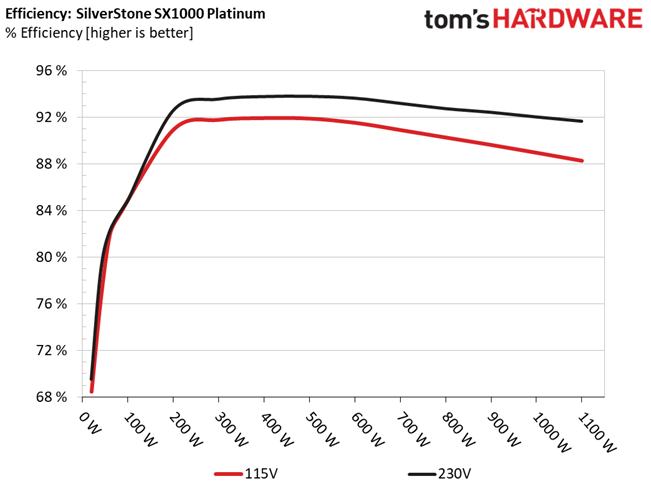
Results 15-18: Efficiency
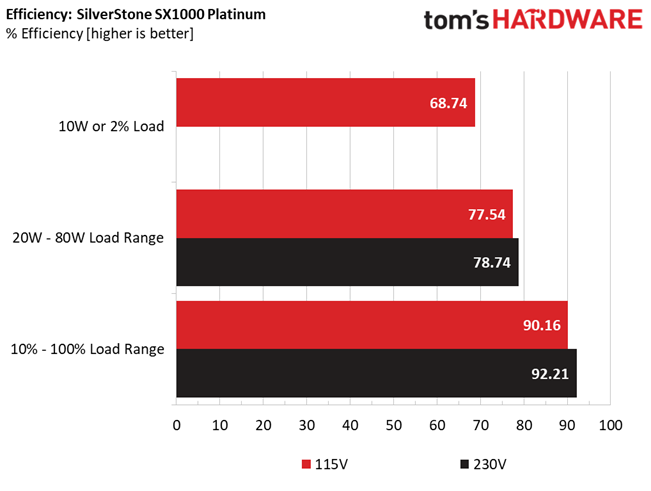
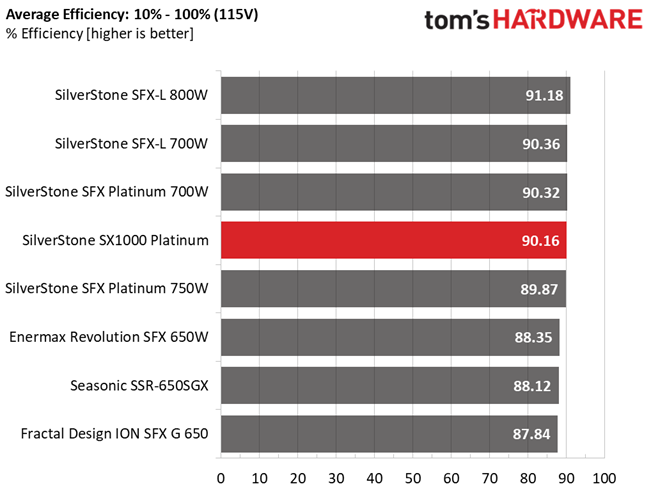
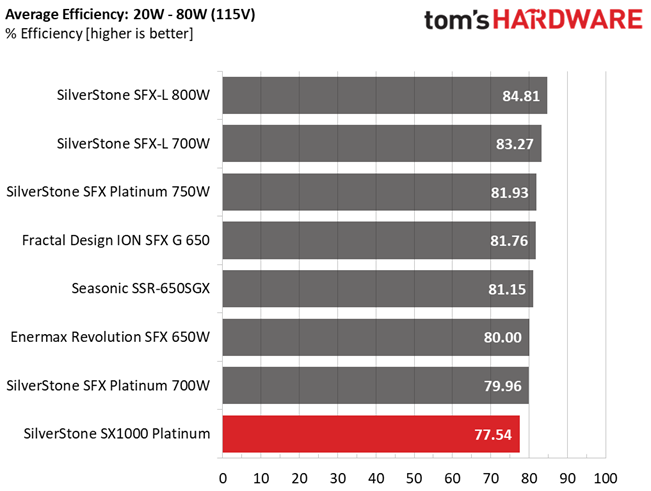
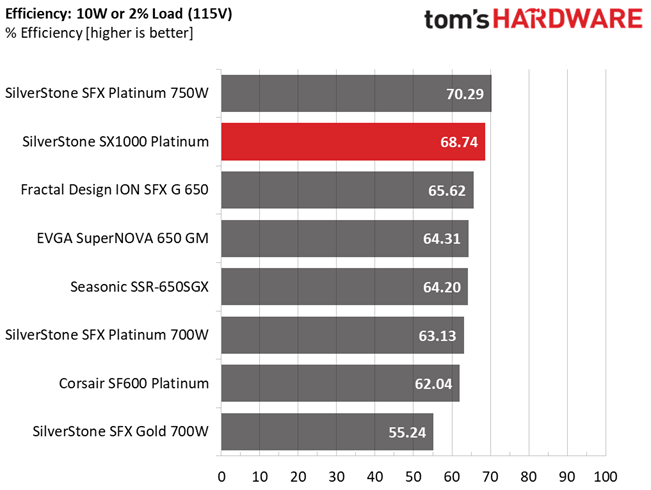
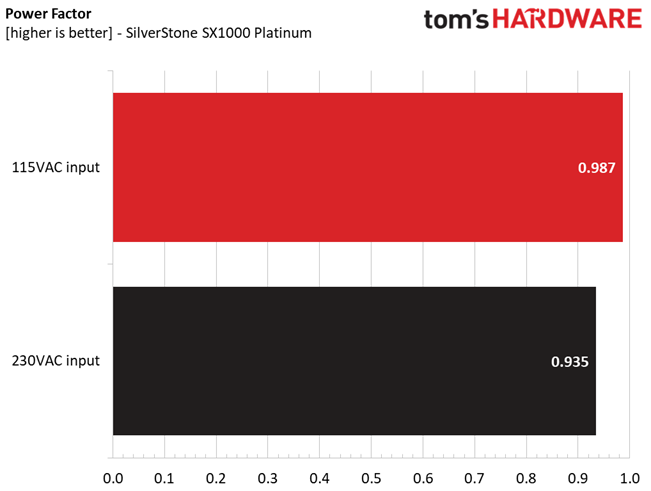
With normal loads, the SX1000 performs well, but with light loads, its efficiency takes a big hit. On the other hand, with a super-light load, it achieves second place in the corresponding graph.
5VSB Efficiency
| Test # | 5VSB | DC/AC (Watts) | Efficiency | PF/AC Volts |
| 1 | 0.100A | 0.509 | 77.591% | 0.039 |
| 5.092V | 0.656 | 115.16V | ||
| 2 | 0.250A | 1.272 | 83.574% | 0.087 |
| 5.089V | 1.522 | 115.16V | ||
| 3 | 0.550A | 2.795 | 85.161% | 0.175 |
| 5.083V | 3.282 | 115.16V | ||
| 4 | 1.000A | 5.073 | 85.476% | 0.273 |
| 5.074V | 5.935 | 115.16V | ||
| 5 | 1.500A | 7.595 | 85.366% | 0.346 |
| 5.064V | 8.897 | 115.15V | ||
| 6 | 2.999A | 15.098 | 83.084% | 0.454 |
| 5.034V | 18.172 | 115.15V |

Results 19-20: 5VSB Efficiency

The 5VSB rail achieves sky-high efficiency.
Power Consumption In Idle And Standby
| Mode | 12V | 5V | 3.3V | 5VSB | Watts | PF/AC Volts |
| Idle | 12.106V | 5.063V | 3.350V | 5.094V | 4.547 | 0.227 |
| 115.1V | ||||||
| Standby | 0.060 | 0.003 | ||||
| 115.1V |
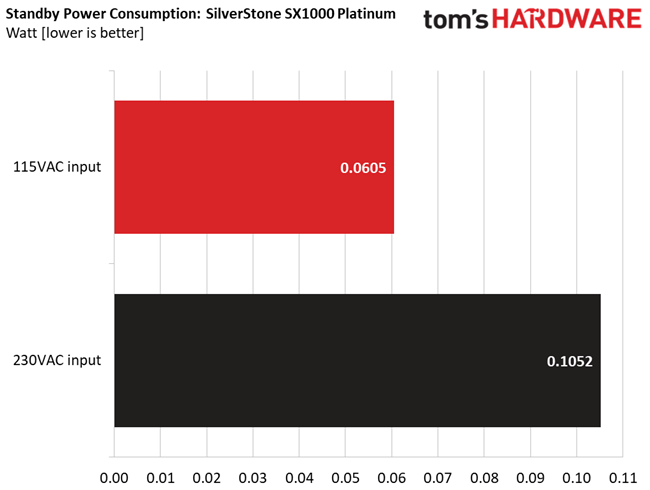
Results 21-22: Vampire Power

Vampire power is low with 115V, but we would like to see below 0.1W with 230V input.
Fan RPM, Delta Temperature, And Output Noise
All results are obtained between an ambient temperature of 37 to 47 degrees Celsius (98.6 to 116.6 degrees Fahrenheit).
The fan speed profile is not linear, but it creates two big steps that don't help keep the average noise output low. It would be better if there were more fan speed changes throughout the entire load range.
The following results were obtained at 30 to 32 degrees Celsius (86 to 89.6 degrees Fahrenheit) ambient temperature.
For a pretty large portion of its operating range, the PSU is in passive mode. However, once the fan starts to spin, the minimum speed exceeds 1000RPM, so it is within the 20-25 dBA range. Up to 700W load, the PSU is not noise, but with only 50W more, it exceeds 40 dBA, and with 870W load, it enters the 45-50 dBA zone.
MORE: Best Power Supplies
MORE: How We Test Power Supplies
MORE: All Power Supply Content
Current page: Load Regulation, Hold-Up Time, Inrush & Leakage Current, Efficiency and Noise
Prev Page Specifications and Part Analysis Next Page Protection Features, DC Power Sequencing, Cross-Load Tests and Infrared Images
Aris Mpitziopoulos is a contributing editor at Tom's Hardware, covering PSUs.
-
littlechipsbigchips Why would anyone need 1000 watts in small itx case ? it will only take one GPU anyways and no one needs 1000 watts for that.Reply -
anonymousdude Replylittlechipsbigchips said:Why would anyone need 1000 watts in small itx case ? it will only take one GPU anyways and no one needs 1000 watts for that.
If you want to stay around 50% load for max efficiency then this needed. Especially when people cram like a 3090 and a 5950x/ into an ITX with custom water cooling and stuff just because they can. Alternatively they might be a modder where they need the smaller PSU for some reason. Definitely a niche product though. -
COLGeek I have the 700w version of this in a Fractal Design ITX case. It does not ship with the bracket necessary to mount to an ATX PSU location. Just sharing for others to be aware of.Reply
Nearly silent PSU, by the way. -
junglist724 Reply
My 3090FE trips OCP on my SF750 platinum in several games at 4K. Asus even said they measured up to 940W peak power draw from a 3090 in a recent video showcasing their new Thor PSUs. oy65PZCTIlc:2270View: https://youtu.be/oy65PZCTIlc?t=37m50slittlechipsbigchips said:Why would anyone need 1000 watts in small itx case ? it will only take one GPU anyways and no one needs 1000 watts for that.
